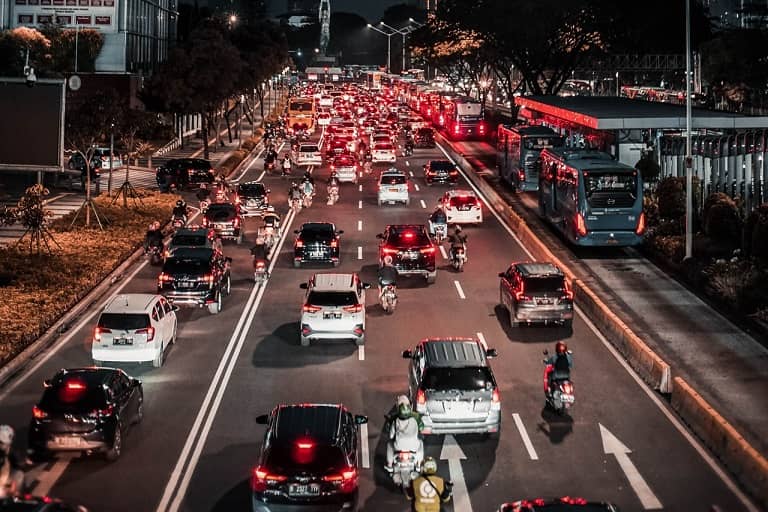
Is Lane Splitting Legal in West Virginia? Important Safety Laws Motorcyclists Need to Know
Motorcyclists exist in a hybrid space when it comes to transportation. They have the speed and power of a larger vehicle while maintaining the flexibility and space demands closer to pedestrians. This dual existence is one of the benefits of choosing the transportation method, but it also leaves motorcyclists in something of a legal gray area at times, and lane splitting is one of the most controversial and misunderstood examples.
If you’re a motorcyclist in West Virginia, here’s what you need to know before attempting lane splitting in the state. The most important thing to know is that you cannot just take the law at face value. You must also consider how it has been interpreted and applied.
What is lane splitting?
Lane splitting is a controversial practice — at least in the United States. The term refers to a motorcyclist driving between two lanes of cars moving in the same direction (often when there is congested traffic that has slowed to a crawl or even completely stopped).
Lane splitting is not to be confused with other motorcycle-specific traffic practices like lane filtering (where a motorcyclist drives between stopped cars to get to the front of the pack — often at an intersection) or lane sharing (where two motorcyclists ride next to one another in the same lane).
Why is lane splitting controversial?
The practice of lane splitting is common in many European and Asian countries where motorcyclists make up a larger proportion of drivers. In the United States, however, only about 8% of households own a motorcycle, and many of those are not used as the primary mode of transportation.
It’s safe to say that American traffic laws are primarily designed with cars in mind, and that has put lane splitting into the middle of a controversy.
What are the benefits of lane splitting?
The American Motorcyclist Association points to lane splitting as a potential mechanism to get motorcyclists out of the most dangerous driving conditions. More than half of motorcycle accidents occur in congested traffic situations, and the ability to maneuver quickly and safely out of the congestion could put the motorcyclist in a safer position. The Association explains that “motorcyclists who split lanes in heavy traffic are significantly less likely to be struck from behind by other motorists, are less likely to suffer head or torso injuries, and are less likely to sustain fatal injuries in a crash.”
What are the risks of lane splitting?
While lane splitting has been demonstrated in studies to reduce risks to motorcyclists, it can confuse and even enrage conventional drivers. Because motorcyclists make up a relatively small proportion of drivers on American roadways, many other drivers are unaware of their practices, regulations, and needs. In fact, research has shown that drivers are so conditioned to see traditional cars that their brains often do not process the presence of motorcyclists, making inattentive awareness a major source of concern and a cause of (often fatal) accidents.
Most conventional car drivers are not expecting to see a motorcyclist between the lanes of stopped traffic, and even the American Motorcyclist Association admits that passing legislation to make lane splitting legal will not entirely solve the problem: “Significant effort would subsequently be required to educate the law enforcement community, officials and administrators within state departments of transportation and public safety, prosecutors, the judiciary and the general motoring public on the benefits to those groups and motorcyclists to make lane splitting safe for everyone.”
Is lane splitting legal in West Virginia?
Presently, there is only one state where lane splitting is legal: California. Meanwhile, there are multiple states where lane splitting is not specifically prohibited, either. West Virginia is one such state. That doesn’t mean, however, that motorcyclists in West Virginia should consider lane splitting as standard practice. Since it is not specifically discussed in the legislature, it is likely that a police officer would ticket and fine a motorcyclist for lane splitting in the state.
More importantly, an auto accident that occurs during lane splitting may be looked upon as the motorcyclist’s liability during investigation.
This is a case where motorcyclists have to be particularly attentive and cautious. It can be tempting to read the lack of discussion on lane splitting in the West Virginian legislature as an endorsement of the practice, but that would be premature and open up the door to misunderstandings and potentially costly legal ramifications.
While there is plenty of evidence that lane splitting is a valid practice that many motorcyclists endorse around the globe, the best course of action is to lobby for official legislative changes and awareness campaigns to make sure that the practice is legally recognized. As the current law sits, lane splitting is not a recommended practice in West Virginia, and those motorcyclists practicing it could find themselves facing fees, accident liability, and legal consequences.

